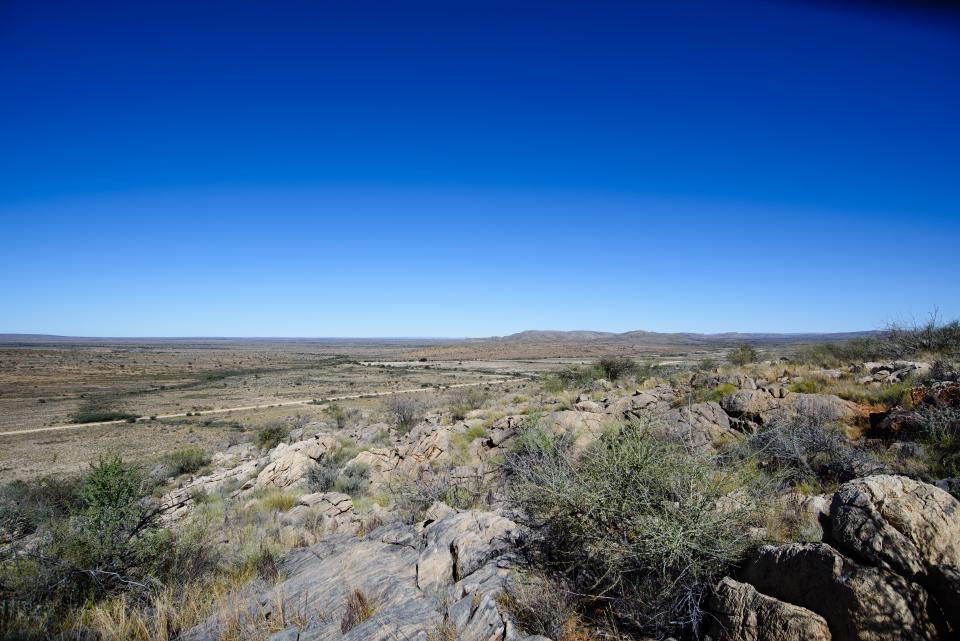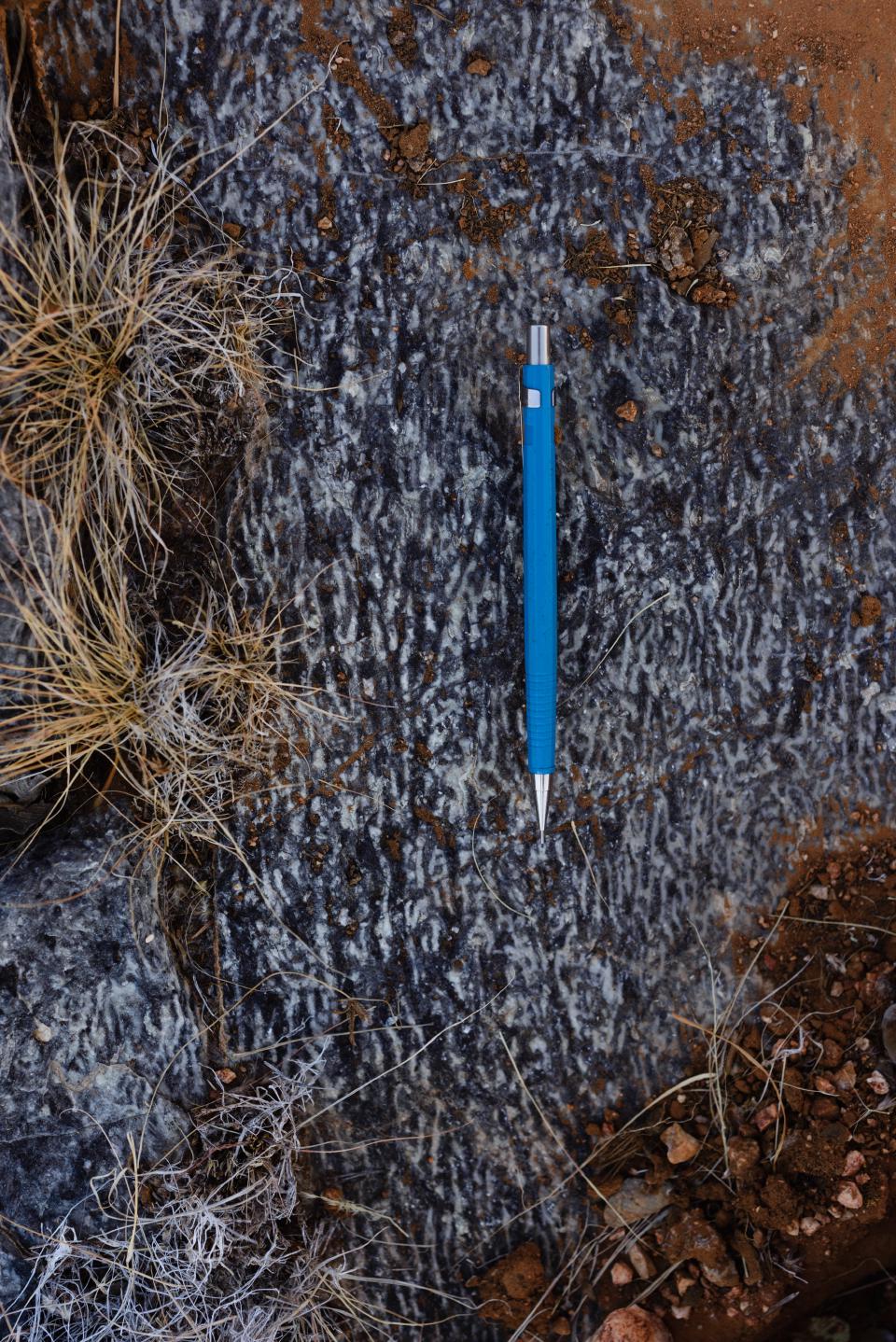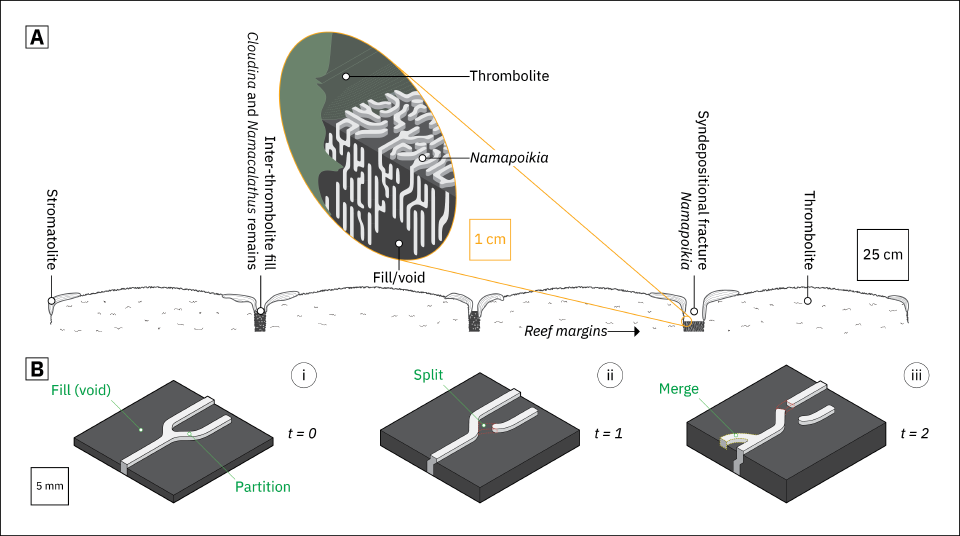Namapoikia
Reconstructions of an enigmatic fossil
Driedoornvlakte Farm, the one place on Earth where Namapoikia is found.
Driedoornvlakte Farm, Namibia
Nikon D810
The earliest record of shell-building animals on Earth is made up of four genera: Cloudina, Sinotubulites, Namacalathus, and Namapoikia. Although these organisms have been the subject of a lot of research 1, their growth habits, biological affinities, and environmental and evolutionary impacts remain debated.
Cloudina, Sinotubulites, and Namacalthus have been described in numerous Ediacaran-age (i.e., between 635 and 539 million years ago) outcroppings all over the world. Namapoikia, on the other hand, can only be found in a single Ediacaran reef, which outcrops on a farm in the middle of Namibia. Located in and on cracks in that reef, the fossil shows up as interconnected networks of millimeter-scale elements, which can be seen splitting off or merging with neighboring elements. On the basis of observations made on exceptional two-dimensional sections, researchers have suggested that Namapoikia likely was a sponge 2.

Namapoikia in the field.
Driedoornvlakte Farm, Namibia
Nikon D810
By 525 million years ago, calcifying sponges had become the first animal reef builders on our planet, producing bioherms that were tens of meters tall. Was Namapoikia a predecessor of these sponges? If so, what can its fossil tell us about the rise, style, and impact of early biomineralization, as well as the history of sponge and metazoan evolution on Earth?
Using GIRI, we made three-dimensional reconstructions of Namapoikia. Through quantitative measurements, we revealed that Namapoikia produced millimeter-thick meandering and branching/merging sheets. Since these elements lack the regularity expected of sponges (or, for that matter, animals in general), we proposed that Namapoikia likely was not a sponge. On the basis of the reconstructed morphology, we suggested that Namapoikia is better explained as a microbially mediated construction.

Diagrams illustrating the proposed model for Namapoikia. See the published article for a complete caption.
[1] See, for example: Germs, 1972 | Return
[2] Wood and Penny, 2018 | Return